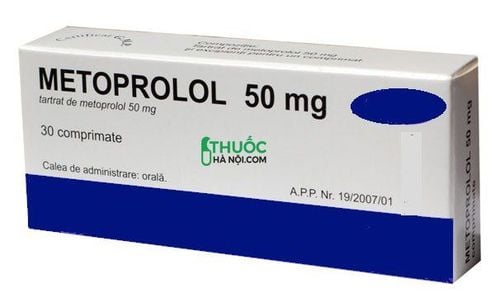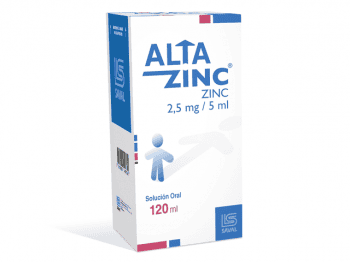This is an automatically translated article.
The article was consulted with Dr. Nguyen Van Duong - Interventional Cardiologist - Cardiovascular Center - Vinmec Central Park International General Hospital.1. What is catheter ablation?
Cardiac ablation is a treatment that works to correct problems with arrhythmias. This method works by scaring or destroying heart tissue that causes or maintains an irregular heartbeat. In some cases, catheter ablation blocks abnormal electrical signals from entering your heart and, therefore, stops arrhythmias. Conventional catheter ablation uses long, flexible catheters that are inserted through a vein or artery in the patient's groin and the doctor inserts the catheter to the heart, delivering energy in the form of heat or extreme cold to treat the condition. regulate the tissues in the heart that cause arrhythmias. Cardiac catheter ablation is sometimes done through open heart surgery, but it is usually done with a catheter, making the procedure less invasive and shortening the recovery time.Special cells in the heart produce electrical signals that travel along pathways to the chambers of the heart. These signals cause the upper and lower chambers of the heart to beat in the proper sequence. Abnormal cells can produce disorganized electrical signals that cause a fast or irregular heartbeat known collectively as an arrhythmia. When this happens, your heart may not be able to pump blood efficiently and you may develop fainting, shortness of breath, and weakness. You may also feel your heart pounding.
Medicines for fast and irregular heartbeats work very well for most people. But they don't work for everyone and can cause side effects in some people. In these cases, your doctor may recommend catheter ablation. This procedure is used most often to treat a condition called supraventricular tachycardia, or SVT, which occurs due to abnormal conduction fibers in the heart. Catheter ablation is also used to help control other heart rhythm problems such as atrial flutter and atrial fibrillation. Catheter ablation destroys abnormal tissue without damaging the rest of the heart.

2. When is catheter ablation indicated?
Catheter ablation is a procedure used to correct heart rhythm problems. When your heart beats, electrical impulses cause your heart to contract in the correct path to reach your heart. Any disruption in these impulses can cause an irregular heartbeat.Common catheter ablation is not the first choice of treatment, but is indicated only for people who:
Tried antiarrhythmic medications but didn't work Have ever had serious side effects Drug-induced cardiac arrhythmias There are several types of arrhythmias that respond well to catheter ablation, such as Wolff-Parkinson-White syndrome and supraventricular tachycardia There is a high risk of complications due to a heart rhythm disorder, such as sudden cardiac arrest
3. Risks of performing catheter ablation
Catheter ablation carries the risk of complications, including:Bleeding or infection at the catheter site Injury to blood vessels when the catheter is inserted to reach the heart Heart perforation Heart valve damage Injury to the system heart's electrical system, which can worsen arrhythmias and require a pacemaker to correct Blood clots in the legs or lungs Stroke or heart attack Narrowing of the veins that carry blood between the lungs and lungs heart Damage to the kidneys from the contrast medium used during the procedure Death in rare cases Discuss the risks and benefits of catheter ablation with your doctor to consider whether the procedure is safe. suitable for you or not.

4. Implementation Process
PrepareYour doctor will evaluate you and may order some tests to evaluate your heart condition. Your doctor will discuss with you the risks and benefits of catheter ablation.
You need to stop eating and drinking the night before the treatment. If you take any medications, ask your doctor if you should continue taking them before the procedure.
Your doctor will let you know if you need to follow any other special instructions before or after the procedure. In some cases, you will be instructed to stop taking your arrhythmia medication a few days before the procedure.
If you have an implanted heart device, such as a pacemaker or defibrillator, talk to your doctor to see if you need to take any special precautions.
During the procedure
Catheter ablation is done in the hospital. Before the procedure begins, your doctor places an intravenous line into your forearm or hand and you'll be given a sedative to relax you. In some cases, general anesthesia can be used instead to put you in a sleep-like state. What type of anesthetic is used depends on your specific condition.
After the sedation takes effect, your doctor or other specialist will numb a small area near a vein in your groin, neck, or forearm. The doctor will insert a needle into a vein and insert a catheter (sheath).
Your doctor will thread tubes through this sheath and direct them to several locations in your heart. Your doctor may inject contrast material into the catheter, which helps the doctor see your blood vessels and heart with X-ray images. Catheters with electrodes on the ends can be used to send electrical impulses to the heart and record the heart's electrical activity.
The process of using imaging and other tests to determine the cause of an arrhythmia is called an electrophysiology study. Electrophysiological exploration is often performed prior to catheter ablation to determine the most effective measure to treat the arrhythmia.
Once the abnormal heart tissue causing the arrhythmia is identified, the doctor will direct the catheter tips into this area of abnormal heart tissue. The energy will pass through the catheter tips to scar or destroy the tissue that is causing your arrhythmia.
In some cases, catheter ablation blocks electrical signals from traveling through your heart to stop the abnormal rhythm and instead, allows the signals to pass through the normal signal pathway.
The energy used in this procedure can come from:
Cryoablation Heat (radio frequency) Laser Tubular ablation typically takes three to six hours to complete, but fields Complex compounds may take longer.
During the procedure, you may feel some discomfort as the catheter is moved through your heart and as energy is used.

Once this is complete, you will be transferred to a recovery area to rest quietly for four to six hours to prevent bleeding at the catheter site. Your heart rate and blood pressure will be continuously monitored to check for complications following catheter ablation.
Depending on your health, you may be able to go home the same day of the procedure or you may need to stay in the hospital. If you go home the same day, have someone else drive you home.
You may feel some pain after the procedure, but the pain should not last more than a week. Usually, you should be able to return to normal activities within a few days of catheter ablation.
Outcome
Although catheter ablation can be successful, in some cases it is still necessary to repeat the technique. You may also need medication, even after catheter ablation.
To keep your heart healthy, you may need lifestyle changes to improve your overall heart health, especially to prevent or treat conditions that can cause or worsen heart disease. arrhythmias, such as high blood pressure. Your doctor may recommend the following:
Use less salt, which can help lower blood pressure Increase physical activity Quit smoking Avoid alcohol Eat heart-healthy foods Maintain a healthy weight Manage strong emotions, such as anger Vinmec equipped with Hybrid Operating Room system, advanced equipment such as DSA angiography machine, anesthesia machine integrated with the most closely patient hemodynamic monitoring software (system) PiCCO system, entropy...). Therefore, the Hybrid operating room can meet the requirements of surgery and intervention for pacemaker implantation, dilation, coronary stenting, aortic stent graft, open heart surgery, heart valve replacement for congenital heart diseases, with Modern techniques are minimally invasive, safe, and help patients recover quickly.
Cardiovascular Center - Vinmec International General Hospital owns a team of experts including professors, doctors, specialists 2, and masters with experience and great reputation in the field of medical treatment. , surgery, interventional cardiac catheterization and application of advanced techniques in the diagnosis and treatment of cardiovascular diseases. In particular, the Center has modern equipment, on par with the most prestigious hospitals in the world.
In addition, Vinmec also has a comprehensive cooperation with Cardiology Institute - Bach Mai Hospital, Cardiology Department of Hanoi Medical University, Paris Decartes University - Georges Pompidou Hospital (France), University of Pennsylvania (USA)...
If you have a need for consultation and examination at Vinmec Hospitals under the nationwide health system, please book an appointment on the website for service.
Please dial HOTLINE for more information or register for an appointment HERE. Download MyVinmec app to make appointments faster and to manage your bookings easily.
References: webmd.com, mayoclinic.org














